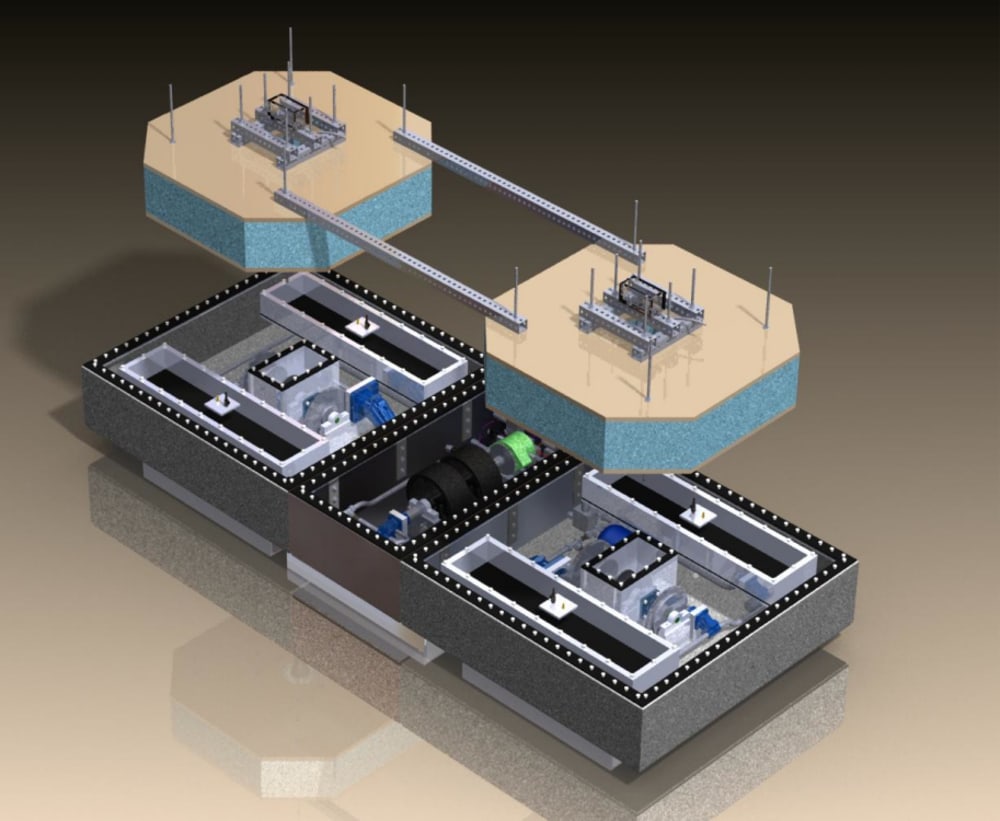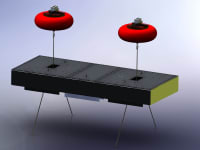The Wave Energy Harnessing Device (WEHD) was developed to harness and convert wave power from mild, moderate, and extreme wave climates.
The unique features of the WEHD include the variable depth, autonomous storm avoidance, wave shoaling, and energy storage features.
The variable depth feature enables the autonomous storm avoidance and wave shoaling features. Sensors on the surface floats relay wave conditions to the on board control systems which calculate the optimal depth for the real time wave conditions.
In extreme wave conditions, the WEHD platform lowers itself near the sea floor to minimize loading on the mooring system. In mild wave conditions, the WEHD raises itself near the surface to shoal waves which concentrates the wave power on to the surface floats to increase conversion efficiency.
The energy storage feature allows the WEHD to store energy as compressed gas before converting the energy to electricity which makes the system viable in mild wave climates. For example, small waves, as found in equatorial regions, may take 6 hours to charge the compressed gas system, but once the system is charged it can provide a steady output of 50 kilowatts of electrical power for 30 minutes.
The design is based on a modified barge. Using a modified barge allows tug boat operators to tow multiple units to sea in one trip; thereby, reducing deployment costs.
The power take-off, conversion, and mooring systems of the WEHD deploy as one unit after a sea floor cable to shore is laid out to the mooring location.
The modular power take-off and conversion systems can be connected to various size surface floats depending on the wave climate. In mild wave climates, small floats can be used to harness 1-10 kilowatts of wave power for 6-12 hours and convert that power to 50 kilowatts of continuous electricity for 30 minutes to an hour. In moderate wave climates, larger floats can be used to harness 10-20 kilowatts of wave power for 3-6 hours and provide 50-250 kilowatts of continuous electricity for 30 minutes to an hour. In extreme wave climates such as the North Sea or Southern Ocean, the WEHD will be able to produce up to 1 megawatt (1000 kilowatts) of continuous power.
The WEHD offers a clean, renewable energy system for vast regions of the planet including equatorial coastal regions of Africa, South America, and the Asian-Pacific where the electricity can be used to power water purification systems, communications networks, and energy storage systems such as hydrogen production from electrolysis as a fuel source for fuel cells.
Ocean waves are a concentrated form of wind power, and wave power is available over 90% of the time in high energy wave regions. By combining high availability, energy storage, and a large array of units, WEHD systems will be able to supply continuous power to many regions of the planet.
Like this entry?
-
About the Entrant
- Name:Michael Raftery
- Type of entry:individual
- Hardware used for this entry:HP Elite Book 8530WSoftware used for this entry:Solidworks
- Patent status:pending








